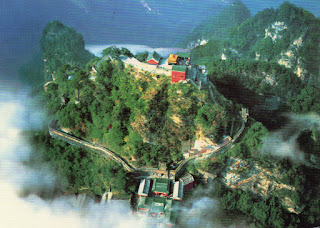This site is one of the most important seabird colonies in the world.
 |
| Gough Island |
This postcard was sent by Edgar
Gough and Inaccessible Islands are two extraordinary uninhabited oceanic islands that have remained relatively undisturbed, and are therefore of special conservation significance. Gough Island is one of the largest cool-temperate oceanic islands in the world that remains close to pristine, having been spared most introductions of invasive species that have decimated unique island biodiversity elsewhere. While Inaccessible Island is smaller, it is of no lesser significance, housing a number of species endemic to this tiny speck in the South Atlantic Ocean.
The spectacular cliffs of each island, towering above the ocean, host some of the most important seabird colonies in the world. These include albatrosses, petrels, and penguins, reliant on the rich marine life surrounding them. Gough Island is home to two endemic species of land birds as well as twelve endemic plant species. - in: https://whc.unesco.org/en/list/740/
































